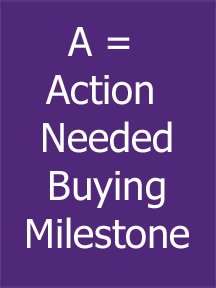Salespeople Don’t Know When They’ve Uncovered The Prospect’s Needs
Today, salespeople have more methods, techniques, and training available to them than ever before. There are more account management systems and CRM software programs to support their efforts. Everything about the world of selling has become much more complicated. With all of this, it can be difficult for salespeople to keep their eye on the ball, which is the most critical element to make a sale.

My thirty years of research into why people buy and the empirical research of others have all arrived at the same conclusion. People buy because they have serious, compelling needs and wants. Without that, they don’t buy. Period. This is why virtually all sales training and selling systems today put a major emphasis on uncovering prospect needs and wants.
What Is The Prospect’s Need?
Most salespeople remain unclear about when they have finished the “uncovering needs” stage and are ready to make their presentation. What is a prospect’s need? When does it become compelling? When is the need enough to justify buying something? How serious does the need have to be to justify the price? All those “uncovering need” techniques don’t offer clear enough answers. That leaves salespeople to their own interpretations and judgment calls. Too often, they call it wrong.

Many salespeople think that if they get the prospect complaining about the way things are right now, they have uncovered the prospects needs. Then, after trying to handle a barrage of objections during their presentation, they walk out of the prospect’s office without an order. Unfortunately, some salespeople and even their sales managers might think this calls for learning better objection handling techniques!
The term “need” doesn’t actually have a useful meaning to a salesperson. It’s not a prospect’s complaints. It’s not a prospect’s frustrations. It’s not a prospect’s issues. It’s not a prospect’s wishes or goals. Could all of those become a part of the “need” that drives the sale. Of course they could. But by themselves, none of them constitute a serious, compelling need that justifies hearing a presentation let alone the price. There are only symptoms that a need may exist.
So we now have all these salespeople who have been trained to follow certain question-asking approaches, but those salespeople often remain clueless as to when the prospect needs have actually been uncovered. They think the answers to their questions constitute the uncovering of the need and justify moving into the presentation. In most cases, it doesn’t.
Only The Prospect Knows When They Have A Need
This all stems from one simple shortcoming in all our training about uncovering needs. Salespeople haven’t been taught the signposts that confirm the prospect is aware of a sufficiently compelling need to justify buying something. Only the prospect knows what they consider a serious, compelling, and costly need—the type of need that calls out for taking action. The “need” is not something salespeople can figure out themselves. It isn’t based on hearing a certain quantity of need type statements because each prospect has a different threshold for what constitutes a need. What might be serious and compelling to one prospect could cause another to just shrug their shoulders.

I first discovered this problem back in 1976 as a commissioned sales representative. These discoveries formed the foundation for The ABCs Of How People Buy. Each prospect defines a compelling need in their own unique way. No two are alike. And no amount of observations alone can give a salesperson the confirmation that the prospect is ready to hear their presentation.
A prospect goes through three distinct thought stages as they travel on the road from no to yes. At the end of each of stage, they arrive at a very clear understanding, which they could state clearly. These are called buying milestones. The prospect must cross each buying milestone before they are ready to move into the next stage of their buying process.
The Prospect’s First Buying Milestone
The first buying milestone is A= Action Needed. The prospect admits they have serious, compelling needs, and want to do something about it. This means they have a need that is compelling and costly. The ABCs teach salespeople the signposts they need to confirm when a prospect is ready to move to the next step in the sales process.

It is the prospect who must be aware of his own needs. It is the prospect who must confirm this. The fact that salespeople are aware is not enough to move a sale forward. The sale happens in the prospect’s mind. When salespeople get this verbal confirmation, they have officially uncovered the prospect’s needs and are ready to move the sale forward.
More sales are lost due to this one issue than any other. Research confirms that over 60% of what affects a salesperson’s ability to close a sale comes from helping a prospect arrive at the A=Action Needed buying milestone. If salespeople did this every time, they would close a lot more sales.
_____________________________________________________________________________________________
_____________________________________________________________________________________________
Questions?
Schedule a phone conversation with Don Shapiro, President of First Concepts Consultants, Inc., to answer your questions and explore how a deeper understanding into how prospects think out a decision to buy could help your salespeople close more sales.
Further Reading
Blog: Raise the Customer’s Perceptions of Value to Close More Sales
Closing the sale is about raising the customer’s perceptions of value as high as possible. This article summarizes 28 years of First Concept’s research about how customer’s figure out their perceptions of value and how this can be applied to get them to say yes more often.



